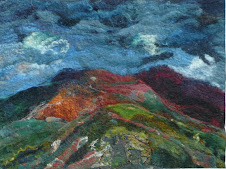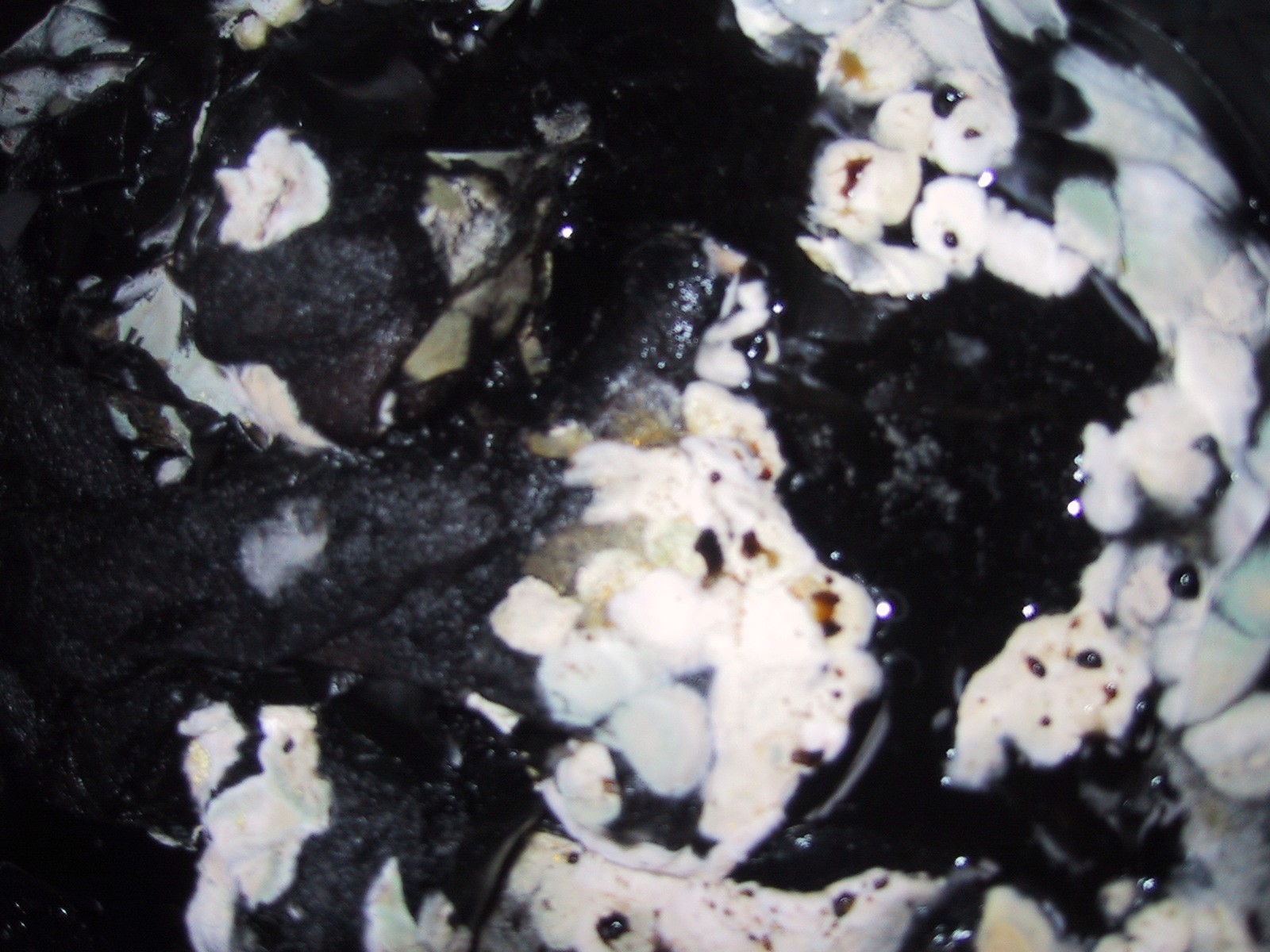

Posted by
Helen I don't often manage to do the workshops run on the
UK Online Guild of Weavers Spinners and Dyers although when I do I always really enjoy them. However
this month
Debbie Bamford of the Mulberry Dyer is running one entitled Dyeing the Reds. Debbie came to the very first dyeing workshop I ever ran in 1995 and I think has been dyeing ever since. She now has a
successful business and does a lot with the
re-enactors market and
over the years has built up a huge knowledge in the history of dyes, historical recipes and specialises in, amongst other things, dyeing linen threads. Now it is my turn to sit at her feet and learn. We started off with dyeing lac.
This I have not done since
went to my very first workshop twenty
or so years ago when
my memory was of a number of us pounding away at the sticky resinous coating to get the red dye and it always seemed too much hard work.
Sticklac ,the crude form of lac was also
very hard to get. Recently however I have used the lac extracts sold by both
Tinctoria Dyes and
Earthues (sold incidentally by the Mulberry Dyer) and loved them being
slightly redder than cochineal.
Both lac and cochineal belong
to the insect dye group, lac having a range between Tibet and China to Burma Siam and India. ( Gerber, Cochineal and the Insect Dyes). According to
Cardon there are 13 different lac insects of
the
Genus Kerria but the common Indian Lac insect
Kerria Lacca is still used on large scale, not for the red dye but for the shellac.
Kerria Chinensis gives the best red dye (
Cardon) The resin of lac is collected from twigs on which the insects grows shaping the resin to the twigs, and this it is called
sticklac. After the dye has been removed the resulting shellac may be melted and dropped forming buttons (button lac) or poured out into thin sheets when it is shellac)
If you want to know how I extracted the dye following Debs recipe you will have to join the
Uk OnlineGuildof WSD and join the workshops!
I found a 100g of
sticklac I had bought from
Fibrecrafts about 5 years ago lying at the bottom of my stash and I used this to extract the dye putting 100g of fibres
in the dye bath. Reading more about it in
Gerbers excellent little book I find that the dye contents is very low 1/2%-3/4% of 1% of the dry weight of the raw material.
I put cashmere and silk,camel and tussah silk, a handful of teeswater curls and two carrier rods in the bath. The camel and tussah silk came out very blotchy with the camel taking up very little dye and that has gone back to be over painted with more dyes. The teeswater curls is the reddest as you can see. it is probably better to dye just one type of fibres in the dyebath as one always seems to grab more dye than the rest.
I loved it however and as soon as I can get some more sticklac from Debbie I will dye more
Dominique Cardon Natural Dyes Archetype Publications isbn 978-1-904982-00-5
Frederick H Gerber Ccochineal and theInsect Dyes published by the author isbn 09601814-3-1
ps Debbie has a new blog
A History of Colour

































